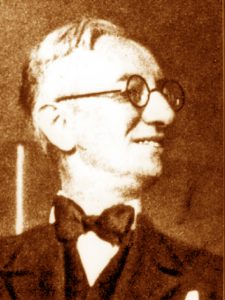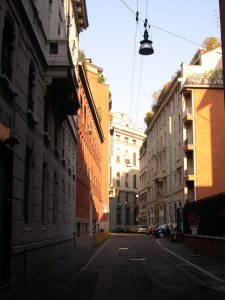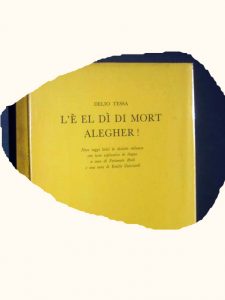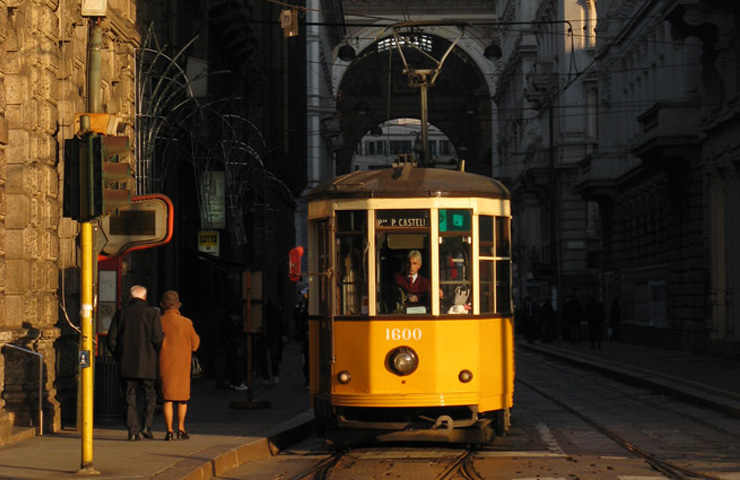


 Write in dialect, when the language cannot provide sounds to express you
Write in dialect, when the language cannot provide sounds to express you
To understand his way of combining poetry and humor, one sentence from him is enough: “In Milan there is still a tram that costs ten cents, but so cheap that it never comes.” His personality was dominate by total distrust of men, as well as by the loss of faith and awareness of the cruelty of fate. Born in Milan in 1886, after graduating as a lawyer, he published a collection of verses in the Milanese dialect; however, those poems by Delio Téssa https://www.ibs.it/de-del-mur-altre-poesie-libro-delio-tessa/e/9788874941636 had little public following, also due to the opposition of Fascism to the use of dialects. During your stay in Milan, do not forget to go to the Porta Ticinese area, look for number 17 in viale Beatrice d’Este and read the commemorative plaque of three artists who lived there: a poet and two painters.







 In the summer, you recognized him for his white canvas trousers, and if it rained he brought with him an umbrella that belonged to his father. In winter, however, he wore a tobacco-colored overcoat. He had gray and watery eyes; he was not tall but rather petite. In addition, he had a pink bezel, a gold tooth, and shortsighted glasses. He had the ability to reduce poetic forms to pleasant illuminations imbued with the Milanese dialect. Out of the wake of the consolidated Milanese tradition, Delio Téssa‘s poetics https://www.liberliber.it/online/autori/autori-t/delio-tessa/ grafted decadent and expressionistic ways, introducing elements of news and hallucinating atmospheres full of humor. In his L’è el dì di Mort alegher, he starts from the ceremonies connected to the anniversary of the Dead and the defeat of the Italian army at Caporetto, concluding with verses connected to the transience of life.
In the summer, you recognized him for his white canvas trousers, and if it rained he brought with him an umbrella that belonged to his father. In winter, however, he wore a tobacco-colored overcoat. He had gray and watery eyes; he was not tall but rather petite. In addition, he had a pink bezel, a gold tooth, and shortsighted glasses. He had the ability to reduce poetic forms to pleasant illuminations imbued with the Milanese dialect. Out of the wake of the consolidated Milanese tradition, Delio Téssa‘s poetics https://www.liberliber.it/online/autori/autori-t/delio-tessa/ grafted decadent and expressionistic ways, introducing elements of news and hallucinating atmospheres full of humor. In his L’è el dì di Mort alegher, he starts from the ceremonies connected to the anniversary of the Dead and the defeat of the Italian army at Caporetto, concluding with verses connected to the transience of life.



 In a very personal way and taking care of the musicality and sonority of his verses, he dealt with themes connected to war and the daily life of the marginalized. His career as a lawyer was not very successful; however, he had enough clients to live with dignity. As an anti-fascist he remained a stranger to the official culture of his time, preferring to write for Italian and foreign periodicals. In 1932, he wrote the screenplay Old Europe, which was follow by Cursed men. Posthumously, in 1947, appeared by Delio Téssa‘s collection http://www.storiadimilano.it/repertori/tessa/cronologia_tessa.htm Poems new and last. In 1985 other posthumous volumes were published, including L’è el dì di mort, alegher!
In a very personal way and taking care of the musicality and sonority of his verses, he dealt with themes connected to war and the daily life of the marginalized. His career as a lawyer was not very successful; however, he had enough clients to live with dignity. As an anti-fascist he remained a stranger to the official culture of his time, preferring to write for Italian and foreign periodicals. In 1932, he wrote the screenplay Old Europe, which was follow by Cursed men. Posthumously, in 1947, appeared by Delio Téssa‘s collection http://www.storiadimilano.it/repertori/tessa/cronologia_tessa.htm Poems new and last. In 1985 other posthumous volumes were published, including L’è el dì di mort, alegher!

 He was born in via Fieno Delio Tessa, and from
He was born in via Fieno Delio Tessa, and from
 1895 to 1928, he lived at number 1 via Olmetto. Finally, he moved to his last house, at 17 viale Beatrice d’Este (fourth floor). His dear friends were Pier Giorgio Vanni and Elisabetta Keller. With a shy temperament, he remained a bachelor after a sentimental disappointment. Due to a dental septicemia, Delio Téssa http://www.milanesiabella.it/deliotessa_bio_el.htm died in 1939. As per his testamentary dispositions, he was burie in a very simple field of the city cemetery. In 1950, his remains were transfer to the Crypt of the Famedio in the Monumental Cemetery of Milan.
1895 to 1928, he lived at number 1 via Olmetto. Finally, he moved to his last house, at 17 viale Beatrice d’Este (fourth floor). His dear friends were Pier Giorgio Vanni and Elisabetta Keller. With a shy temperament, he remained a bachelor after a sentimental disappointment. Due to a dental septicemia, Delio Téssa http://www.milanesiabella.it/deliotessa_bio_el.htm died in 1939. As per his testamentary dispositions, he was burie in a very simple field of the city cemetery. In 1950, his remains were transfer to the Crypt of the Famedio in the Monumental Cemetery of Milan.

 CAPORETTO 1917. THE DAY OF THE DEAD (Extract) – http://www.milanesiabella.it/deliotessa_leeldidimort.htm. I come back from Viale Certosa, I come back from the cemeteries, in the midst of a seedbed of shouting drunks, of revelers who sing and joke in peace arm in arm with the girl. It is the day of the dead, happy! Under the pergolas she dances, laughs and swallows; the black trams of those returning home to eat and drink pass: chickpeas and temples, happy children, we are screw! Our infantrymen by dint of numbing them, taking them to the kitchen, sending them to beat them, threw away their uniforms, kicking their asses. They run away, these sacrates have surrendered, they tell me, they throw away their weapons, they run away in all directions. They slapped our uncle on the butt along four spans and stable, it’s day of the dead and god!
CAPORETTO 1917. THE DAY OF THE DEAD (Extract) – http://www.milanesiabella.it/deliotessa_leeldidimort.htm. I come back from Viale Certosa, I come back from the cemeteries, in the midst of a seedbed of shouting drunks, of revelers who sing and joke in peace arm in arm with the girl. It is the day of the dead, happy! Under the pergolas she dances, laughs and swallows; the black trams of those returning home to eat and drink pass: chickpeas and temples, happy children, we are screw! Our infantrymen by dint of numbing them, taking them to the kitchen, sending them to beat them, threw away their uniforms, kicking their asses. They run away, these sacrates have surrendered, they tell me, they throw away their weapons, they run away in all directions. They slapped our uncle on the butt along four spans and stable, it’s day of the dead and god!

If you want to know writers, you can type http://meetingbenches.com/category/library/, while for poets around the world http://meetingbenches.com/category/poetry/. The sole purpose of this site is to spread the knowledge of these artists and that other people enjoy their works. The property of the images that appear in this blog correspond to their authors.







